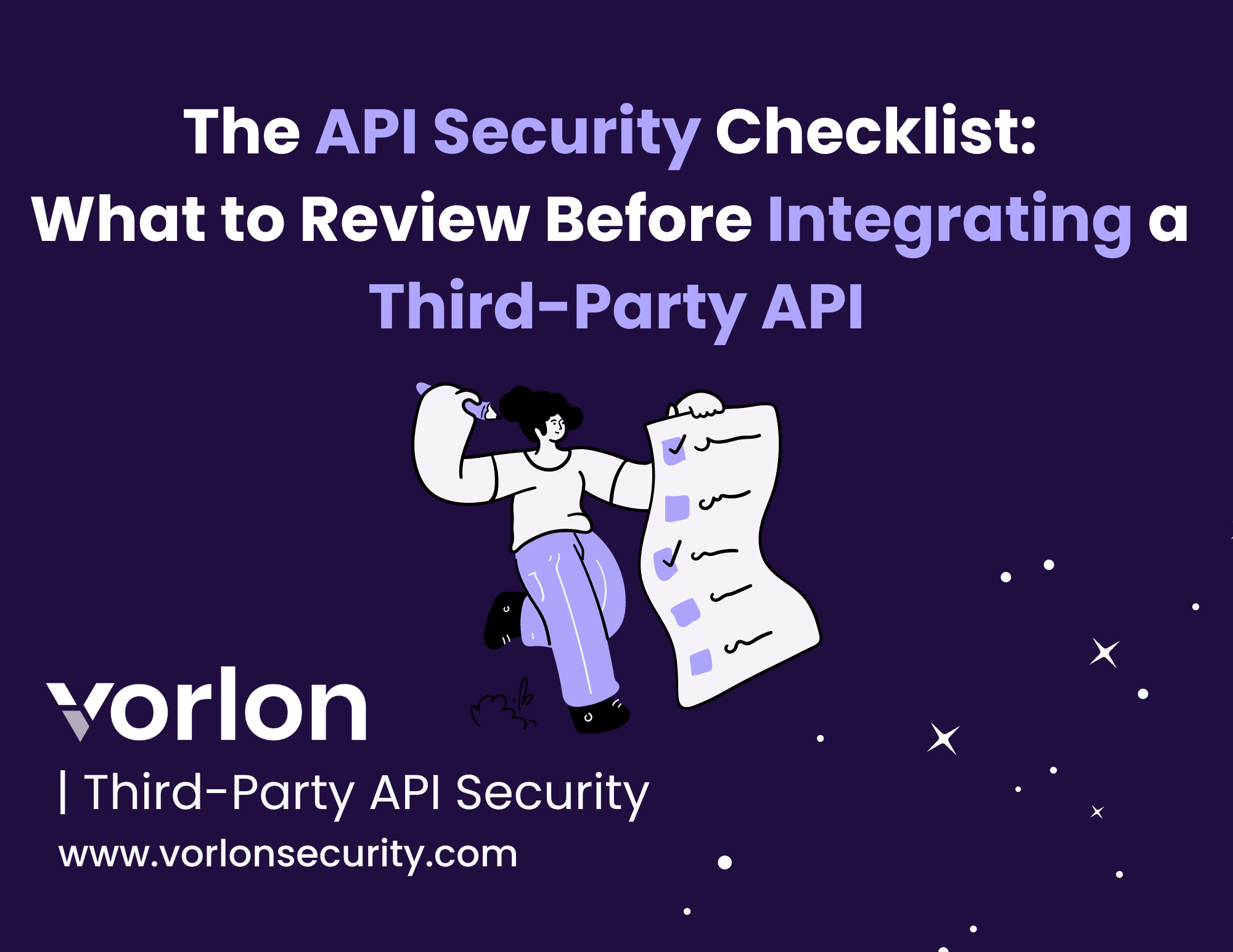The API Security Checklist: What to Review Before Integrating a Third-Party API

Integrating third-party APIs into your application can significantly boost functionality and efficiency. However, without proper security evaluation, these APIs can introduce risks that may expose sensitive data, compromise user privacy, or allow unauthorized access. To protect your organization and its data, it’s essential to have a thorough review process in place before integrating any external API.
Here’s a comprehensive API security checklist for developers and security teams:
1. API Documentation Review
- Understand API Scope: Review the API’s documentation to understand the data it exposes, the endpoints it provides, and how it processes your data. Ensure that only the required features and endpoints are utilized.
- Versioning: Check if the API supports versioning and whether new versions introduce any breaking changes or security updates. Opt for the latest stable version.
2. Authentication Mechanisms
- OAuth 2.0 / OpenID Connect: Prefer APIs that use OAuth 2.0 or OpenID Connect for authentication and authorization. These standards ensure secure delegation of access without sharing credentials.
- API Keys: If the API uses API keys, ensure they are securely managed. Keys should be unique to each application and user, and not hardcoded in source code.
- Token Expiry and Rotation: Confirm that the API implements expiration policies and supports token rotation to minimize the risk of long-lived access tokens being exploited.
3. Encryption
- Transport Layer Security (TLS): Ensure that the API enforces HTTPS for all communications to prevent man-in-the-middle (MITM) attacks. Verify that TLS is properly configured using current best practices (e.g., TLS 1.2 or 1.3).
- Data Encryption: If sensitive data is being transmitted or stored, confirm that it is encrypted both in transit and at rest. Look for encryption standards like AES-256 for data storage and transmission.
4. Access Control and Least Privilege
- Granular Permissions: Evaluate whether the API allows for fine-grained permissions (e.g., OAuth scopes) to ensure that your application only has access to the data and functionality it needs. Implement the principle of least privilege by limiting access where possible.
- Rate Limiting and Throttling: Check if the API enforces rate limiting and throttling to protect against misuse and distributed denial-of-service (DDoS) attacks. Ensure that your application adheres to these limits to avoid potential disruptions.
5. Data Privacy and Compliance
- Data Handling Policies: Ensure the third-party vendor complies with data privacy regulations such as GDPR, CCPA, or HIPAA if relevant. Verify how they handle, store, and dispose of sensitive data.
- User Data and Consent: Understand how the API manages user data and whether it collects personal information. Ensure users’ consent is obtained before sharing any personal data, in line with privacy laws.
- Data Minimization: Review what data is shared with the third-party API. Only share the minimum necessary to complete the intended functionality.
6. Logging and Monitoring
- Audit Logs: Confirm whether the API provides audit logs or other logging capabilities that allow you to monitor API usage, track access to sensitive data, and investigate security incidents.
- Anomaly Detection: Look for features that can detect unusual traffic or patterns of behavior that might indicate abuse, such as repeated failed login attempts or unusual data requests.
7. Error Handling and Security Headers
- Error Response: Review how the API handles errors. It should not expose sensitive information in error messages (e.g., stack traces, internal server details) that could be leveraged by attackers.
- Security Headers: Confirm that the API enforces best security practices with appropriate headers, including Content-Security-Policy, X-Frame-Options, and X-Content-Type-Options.
8. API Rate Limiting and Quotas
- Rate Limits: Understand the rate limits imposed by the API provider to prevent your application from overwhelming their service or being throttled unnecessarily.
- Throttling Policies: Look for clear documentation on what happens when you exceed rate limits (e.g., error responses or delayed service) and plan accordingly to avoid service disruption.
9. Patch Management and Vulnerability Disclosure
- Security Patches: Ensure the API vendor regularly updates and patches their API to address known vulnerabilities. Check whether they communicate updates and security patches transparently.
- Vulnerability Disclosure Program: Review if the vendor has a vulnerability disclosure program and how they handle reported security issues.
10. Third-Party API Dependencies
- Supply Chain Risk: Understand if the third-party API relies on other APIs or services, as this can introduce additional risks. Make sure you have visibility into any additional dependencies and assess their security.
11. Incident Response Plan
- Incident Reporting: Ensure the API vendor has an incident response plan in place. Check how quickly they respond to security incidents and if they provide notification in case of breaches or disruptions.
- Business Continuity and SLAs: Understand the service-level agreements (SLAs) for uptime, support, and response times during incidents.
Conclusion
Securing third-party API integrations requires a thorough evaluation of the API’s security posture, its compliance with data protection standards, and how it manages sensitive data. By following this checklist, developers and security teams can significantly reduce the risks associated with integrating third-party APIs and ensure that both internal systems and customer data remain protected.
Additionally, Vorlon can be instrumental in your third-party API security posture. Vorlon’s capabilities include real-time monitoring and logging of API interactions, which helps detect anomalies and potential misuse early on.
With Vorlon’s insights, you can enhance your API security posture, ensuring that your integrations are as safe as possible. By leveraging its monitoring capabilities, you can focus on building secure applications while keeping user data protected.